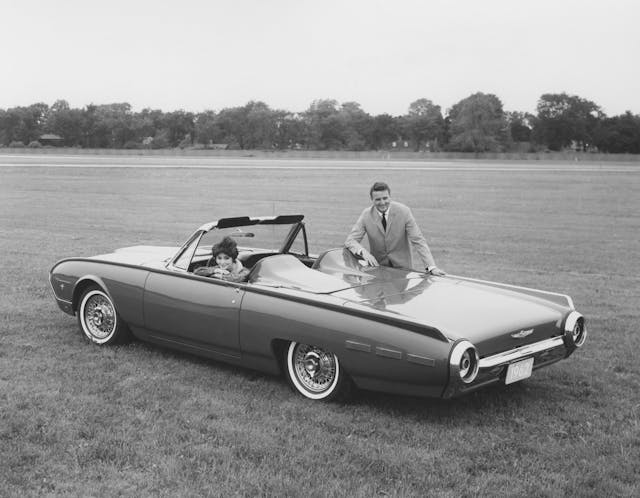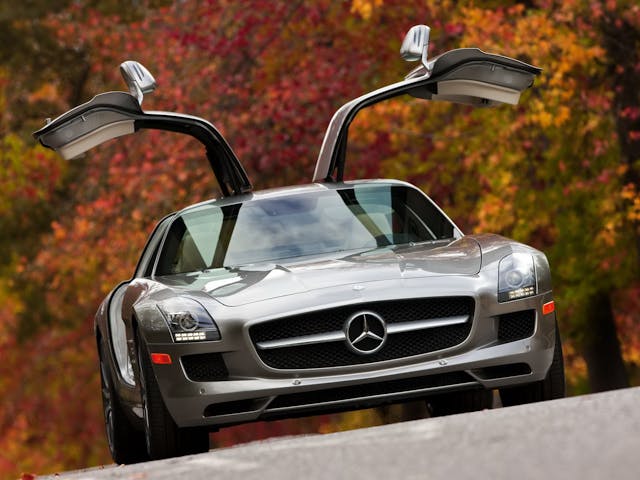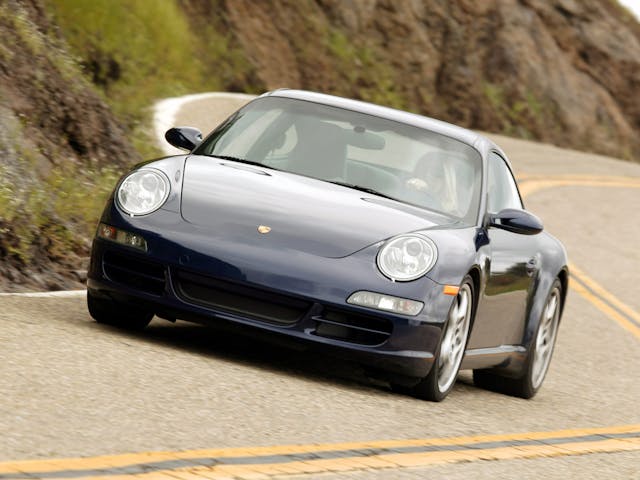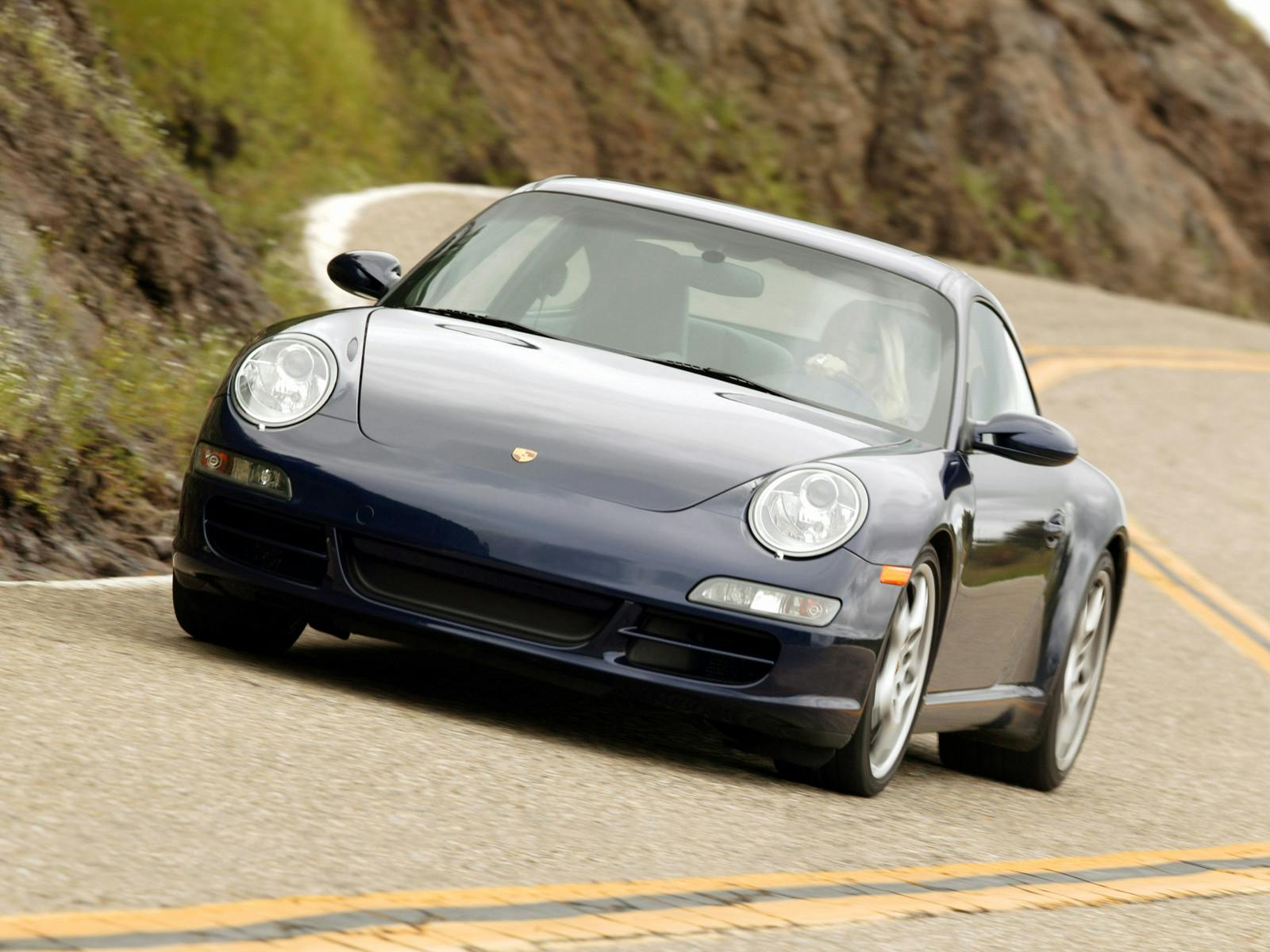Media | Articles
The 5 Cars That Lost the Most Value at the End of 2023
With another quarter behind us, values for the 48,000 cars, trucks, and motorcycles in the Hagerty Price Guide have once again been updated. With that, we’ve observed that the market’s cooling has now crept into all collector car segments and is no longer confined to specific areas.
Although most drops were minimal, some did make us stand up and take notice. Out of that massive list of vehicles, the cars listed here posted the most significant losses in value—it’s a rare scenario that one brand (in this case, Mercedes-Benz) has such a prominent presence on a Price Guide winners or losers list—but that is how the numbers shook out in this instance.
1962–63 Ford Thunderbird Sport Roadster: -23%

It isn’t as widely known as the 1955–57 T-Birds, but the attractive third-generation Thunderbird, or “Bullet Bird,” really epitomizes the idea of a personal luxury car, whereas the earlier ‘Birds could be better compared to the Corvette. Although T-Birds grew substantially in size over the years, Ford never strayed far from giving them an underlying sportiness. One of the key features Ford offered for 1962 and ’63 only was the Sport Roadster configuration. The most obvious components of the Sport Roadster were a two-seater configuration, 48-spoke Kelsey-Hayes wheels, and a sporty cowling behind those seats.
These were offered as special-edition cars, so understandably they sold in low numbers and are quite uncommon today. The collector market has long prized these cars, however, with buyers willing to pay a decent premium over standard convertibles. That said, the Sport Roadsters have experienced a softening in value as mixed results and a few decent cars selling below expectations have lowered values 23 percent on average. Not to worry, though, it is more likely that the market has corrected on these cars rather than the bottom falling out. It seems unlikely that further large drops will happen in the near future. In fact, Sport Roadster values should prove an interesting comparison over the 12 months to those of the slightly later 1964–66 T-Bird, a car we selected as one to watch for our 2024 Bull Market List.
1996–2003 Mercedes-Benz E320 Station Wagon: -23%

Over the past few years, Mercedes W210 wagons have been among several cars that have leapt from the used-car realm into collectible status. Though they still fall solidly into the affordable category, the E320 has drawn the attention of Mercedes enthusiasts as 1990s German cars have surged in popularity. Despite more than doubling in value over the past three years, these are still sub-$30,000 cars, even in perfect condition.
Marketplace
Buy and sell classics with confidence
Like most cars that have gone up aggressively in the post-pandemic landscape, these Benzes have finally started to calm down in value, dropping by 23 percent over the final quarter of 2023. Dollar-wise, this isn’t substantial on an already affordable model; however, the drop reflects the reality that affordable cars in particular are starting to calm down as the market levels out. Unfortunately, the likelihood of these wagons being “dirt cheap” again are extremely low, as is generally the case with any vehicle that has begun to attract the attention of collectors. So, if you’ve been holding out for a better deal, now may be the right time to strike.
1981–85 Mercedes-Benz 300TD: -19%

Older Mercedes have the reputation of being absolute tanks that just keep going, and going, and going. One of the cars key to establishing that reputation was the venerable W123-based Turbo Diesel wagon. Simply put, those with fewer than 200,000 miles are considered to be “just broken in.” However, it hasn’t been until recently that these cars experienced a sort of renaissance, as enthusiasts began viewing them as collector items rather than mere thrifty economy machines.
As a result, and much like we’ve seen with the Volvo 240, these 300TDs have shot up in value. Chief among them have been lower-mile cars, with buyers willing to pay in the $50,000–$60,000 range for select examples. But what goes up must come down, and these 300TDs have settled, with the very best ones dropping by 19 percent. It is uncertain if this is a one-time fall, or if the rapidly expanded market for the 300TD is coming back to reality. Time will tell.
2005–08 Porsche 911 Carrera S Coupe: -19%

In terms of water-cooled 911s, the 997-series is often looked at as a sweet spot in the 911 lineage. It is generally regarded as better looking than the 996 and is proportionally better-sized compared to the subsequent 991. A Goldilocks 911 if there ever was one. The 997 market is incredibly nuanced and impossible to unpack in this article, but the short of it is that 997s have experienced a bit of cooling. Of those slowing cars, the Carrera S has shown the most substantial drop, and more specifically, the 997.1 Carrera S.
While confirmed transactions have shown that these cars have softened an average of 19 percent, the broader view of the 911 market is that earlier water-cooled cars, like the 996 and 997, have all begun to cool a bit. It is important to remember that they are not alone, and few cars have proven themselves immune. Although there seems to be little indication of the bottom falling out anywhere, it is important to keep an eye on the 997 for further adjustments.
2010–15 Mercedes-Benz SLS AMG: -17%

Mercedes’ throwback to the venerable 300SL Gullwings has turned out to be one of the company’s best instant collector cars since its collaboration with McLaren to create the 2004 SLR. The 6.2-liter SLS sports cars came in both gullwing and convertible configurations, but most seem to prefer the distinctive coupe. From the very beginning, many of these cars were bought up and immediately tucked away into collections, especially the bonkers Black Series variants.
These SLS cars show up for sale on a regular basis and they regularly sell very well. The caveat is that most are extremely low-miles examples, which essentially skews the market for the ones that actually have been used. Fortunately for us, a number them that have some miles under their belts have come up for sale, and they’ve given everyone a better glimpse at the SLS market. These higher-mile cars have sold for lower-than-expected prices, causing a slight correction to SLS values. That said, it is unlikely that a 17 percent drop now is an indication of more big losses. It is more likely that we are witnessing the correction of a market dragged up by beyond-exceptional cars.







It appears German cars have taken a beating.
R32 GTR lost a lot of value….
“We seen”? Come on, Hagerty writers!
Fixed!
I am an older car guy and while I always liked the early 60’s, 70’s Porsche 911’s, I have driven them but never owned one. The newer 911’s while being still good looking cars, would turn me off when I would see these cars with automatic transmissions. I know you can shift them but, to me, having the third pedal is everything! There were quite a few baby boomers, with tons of cash, who wanted a Porsche and wanted to be seen in a Porsche, but didn’t want to be bothered with knowing how to drive a Porsche!
call me crazy…most boomers learned to drive manual
I’d like to see a list of vehicles that will never loose value. Not exotic but regular vehicles under 80k when purchased new.
^^^ This!
I would like to see the same type of list, Autocar.
I have a “highly sought after” TRUCK that would never be included with the exotics.
Trying to figure out what my asking price will be and when to sell is extremely confusing when evaluating all the different markets.
Cars are a terrible investment.
The 997.2 is the sweet spot with DFI engine, PDK, the right size the analog steering they’ll continue to hold their value and be desirable imho
Well, they seem to be down quite a bit – not just below pre-COVID but approaching the values in 2016. As an owner of a 997.2 C2S, this kind of sucks.
Yawn.
Station wagon and collector car. How can those two even be in the same sentance.?
I take it you’ve never been in the market for a post-WWII woody.
What’s with it with all these foreign cars in your articles? Do you think that you guys can be at least 70/30 American cars instead of the other way around??
This article is about the five cars that lost the most value. Hagerty doesn’t have any control over what country they come from.
I’ve always liked the “bullet birds.” The football coach at my high school had one – I don’t remember whether it was the sports model or not, though.
Agreed. In my view the bullet birds with their rocket spaceship styling were among the best styled cars of all time. Granted, being born in the late 50’s means the 60’s were my growing up period. I like the first Rivieras as well, ’63 – ’65. Gorgeous cars with equally beautiful interiors.
I’m not taking anything away from the great muscle cars of the era, there’s room for plenty of “dream” cars in my head…
Ian Fleming base his action hero James Bond on Lionel Buster Crabb, a war hero turned British spy whose disappearance has never been properly explained
Two different Crabb(e) s
Lionel Crabb (Buster Crabb) war hero disappeared on a mission to look at a soviet ship.
Buster Crabbe Swimmer actor.
When I was young, I thought they were the same person, Flash Gorden dying from looking at a soviet ship.
I have an MG TC in good condition that seems to have lost value. I also have a low mileage 1997 Jaguar XK8 in good condition with a new transmission and the various engine problems fixed. It also seems to have lost value. I need to get rid of at least one of these cars. Is anyone interested?
What the article does not say is what years are they using for these vehicles values? Example……….the 2005 – 2008 Porsche 911 997.1……………you have to remember, these 911’s went up in price starting in 2020 through 2022 SOLELY because of Covid and the huge cutback in new car manufacturing. So, is this 19% drop in value calculated on the inflated price of used Porsche’s over these years? Rest assured, this 19% drop should in reality be over 30% just to put these cars back where they were “pre-Covid” as a depreciating asset. Porsche built about 220,000 997’s in all variants…………those are NOT “collectable” numbers (excluding a handful of GT whatever’s). Yes, finding a 997.1 with the upgraded IMS is a bonus………..but it is far from a guarantee. Then you add in bore-scoring in almost all of them and then the worn crankshaft bearings at 80,000 to 90,000 miles. THIS engine was NOT Porsche’s finest hour by a longshot and that’s why it HAD to be replaced at midpoint of the 997 generation.